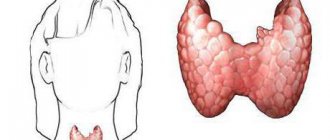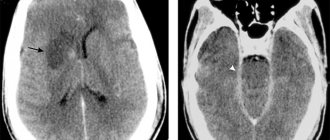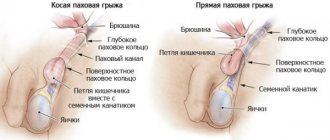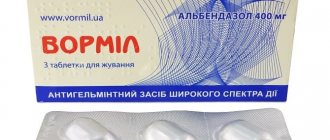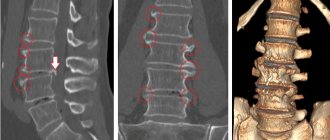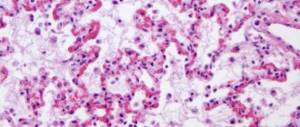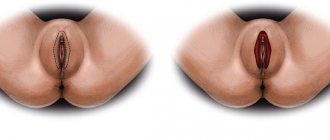Causes of hernia formation
The main reason for the development of abdominal hernias is an imbalance between intra-abdominal pressure and the ability of the abdominal walls to counteract it. Common factors for the formation of hernias are usually divided into two groups:
- Predisposing factors. These include features of the human constitution that have developed on the basis of hereditary or acquired properties. This is, first of all, a hereditary predisposition to the formation of hernias, as well as typical, gender and age differences in body structure. For example, changes in the abdominal wall associated with pregnancy, heavy physical labor, and malnutrition (obesity or exhaustion).
- Producing factors that contribute to an increase in intra-abdominal pressure or its sharp fluctuations. For example, lifting a load, frequent crying and screaming in infancy, cough tremors in chronic lung diseases, constipation when straining, difficulty urinating in prostate adenoma.
The interaction of these factors determines the location and nature of the hernia that forms.
In other words, the cause of hernias is weak spots in the membranes of certain cavities , in particular the abdominal cavity. Weaknesses can be either congenital or appear during life (acquired) - after operations, during and after childbirth, etc.
In the mechanisms of development of hernias of the anterior abdominal wall, an increase in intra-abdominal pressure (heavy lifting, chronic constipation, difficulty urinating due to prostate adenoma and narrowing of the urethra, cough due to pulmonary diseases, pregnancy and childbirth).
1.What is a ventral hernia
Ventral hernia is a pathology related to surgical diseases. A hernia is an abnormal protrusion of internal organs into the subcutaneous fat space. The organs protrude along with the peritoneal tissues if the hernia is located on the abdomen. Less common types of ventral hernia are inguinal-scrotal hernia and hernia of the white line of the abdomen.
The classification of ventral hernias is based not only on their location. Ventral hernias are divided into acquired (postoperative or post-traumatic) and congenital. There are uncomplicated and complicated hernias. The size of the hernia (from small to extensive and even gigantic) is also significant. There are also recurrent hernias and those that are eliminated for life after treatment.
A must read! Help with treatment and hospitalization!
Symptoms of uncomplicated hernias
- a tumor-like formation that appears or increases in a standing position, when coughing or straining and decreases or disappears completely in a lying position;
- increased pain in the hernia area associated with physical exertion, mainly lifting heavy objects, coughing or straining during bowel movements or deurination.
The hernia itself is painless and is usually freely reduced into the abdominal cavity in the supine position. An uncomplicated hernia is the best option for hernia repair .
Strangulated hernia
Important!
If you suspect a strangulated hernia, you should not self-medicate, you should immediately consult a doctor. If a strangulated hernia lasts about a day, then the probability of death increases to 25%. Therefore, if you suspect an injury, you should call an ambulance - if the diagnosis is confirmed, hospitalization and emergency surgery are necessary.
A strangulated hernia is a sudden compression of the hernial contents in the hernial orifice, which usually occurs with significant abdominal tension (lifting weights, severe coughing).
The strangulated loop of intestine is compressed by a muscle ring, the pain causes a spasm, which also causes pain. Attempts to correct the hernia end in failure: the hernial protrusion is enlarged, compacted, and sharply painful. The prolapsed part of the intestine ceases to be supplied with blood and tissue necrosis begins, which can lead to peritonitis.
Symptoms of a strangulated hernia
Attention Important!
1. Before the ambulance arrives, the patient should be put to bed. 2. Under no circumstances should you try to reduce the hernia! 3. Eating and drinking are contraindicated; this may aggravate the patient’s condition. 4. Taking painkillers and laxatives and applying heat (a hot water bottle, etc.) to the stomach are unacceptable.
The main signal of a strangulated hernia is pain that develops at the height of physical effort or tension and does not subside with rest. The pain is so intense that the patient often cannot stop groaning; his behavior becomes restless. The objective status shows pallor of the skin and symptoms of painful shock - tachycardia and hypotension.
The most common symptoms of a strangulated hernia:
- acute abdominal pain;
- increase in hernial protrusion, compaction and pain;
- vomit;
- dangerous symptom - reduction and complete disappearance of pain with prolonged infringement; may indicate intestinal perforation and paralysis.
- absence of the “cough impulse” symptom
Depending on the type of strangulated hernia, pain can radiate to the epigastric region, center of the abdomen, groin, and thigh. When intestinal obstruction occurs, the pain becomes spastic. The pain syndrome, as a rule, is expressed for several hours, until necrosis of the strangulated organ develops and death of the nerve elements occurs. With fecal impaction, pain and intoxication are less pronounced, and intestinal necrosis develops more slowly.
Doctor's tactics at the prehospital stage
At the prehospital stage, a patient with suspected strangulated hernia, as well as complaints of abdominal pain, symptoms of acute intestinal obstruction should be specifically examined for the presence of hernial protrusions in typical places of external hernias: projection of the external inguinal rings, umbilical ring, white line of the abdomen, projection fossa ovalis (femoral triangle area).
If the patient has postoperative scars, detailed palpation of the entire length of the patient’s postoperative scar should be performed to identify hernial protrusions and (or) their entrapments.
If there are symptoms of acute intestinal obstruction, an emergency physician and an outpatient surgeon should additionally examine the exit sites of external hernias of rare localizations:
- anteromedial side of the inner surface of the thigh - obturator hernia;
- the line connecting the umbilicus and the anterior superior iliac spine is a hernia of the semilunar line (Spigelian hernia);
- in the lumbar region, Petit’s triangle and Grunfeld-Lesgaft space - lumbar hernias,
- projection of the greater and lesser sciatic foramen - sciatic hernia.
The patient is examined in both a standing and lying position.
A strangulated hernia should be clinically differentiated from diseases such as inguinal-femoral lymphadenitis; varicose veins of the great saphenous vein; acute orchiepididymitis and funiculitis; hematoma of the scrotum, hydrocele of the testicular membranes; neoplasms of the umbilical region (mts), as well as abscesses and infiltrates.
However, at the prehospital stage, when making diagnoses competing with a strangulated hernia, the prehospital doctor should remember an immutable rule: when differentiating the diagnosis between a strangulated hernia and another disease, all doubts must be resolved in favor of the diagnosis of “strangulated hernia.” This installation allows you to avoid serious clinical errors that have life-threatening consequences for the patient.
The second necessary rule for a prehospital doctor should be that a diagnosis or reasonable assumption (as well as doubts) about the presence of a strangulated hernia in a patient is the basis for immediately sending the patient to a surgical hospital in a lying position on a stretcher.
It should be emphasized that the implementation by doctors of the prehospital stage of emergency medical care of the above provisions, even if the patient has a strangulated external hernia, leads to timely delivery of the patient to the hospital, a reduction in the time interval before the provision of surgical care, and also significantly reduces the number of complications associated with the development of acute intestinal obstruction, phlegmon of the hernial sac, etc.
When pre-hospital doctors arrive on call to a patient with a suspected strangulated hernia and at an outpatient appointment with a surgeon in the clinic, the patient should be specifically informed about the time from which the previously self-reduced external hernia failed to be repaired, and the time when pain occurred in it.
This issue is fundamental, since by the time elapsed from the moment of strangulation of the external hernia to the examination of the patient, in combination with clinical signs, one can indirectly judge the degree of changes that have occurred in the strangulated organs. The obtained anamnesis data should serve as an additional factor for making the correct tactical decision by the pre-hospital emergency physician, and also determine the urgency of transporting the patient to the hospital to provide him with full surgical care.
At the prehospital stage, it is prohibited to reduce a strangulated hernia and administer painkillers with narcotic drugs. It should be remembered that attempts to reduce a hernia are unacceptable, since in practice there are well-known cases when these actions led to the rupture of a strangulated intestinal loop, the formation of an extensive hematoma of its mesentery, the separation of the neck of the hernial sac, or the imaginary reduction of the hernial contents into the abdominal cavity.
When self-reducing a strangulated hernia at the prehospital stage, the patient should be sent to the hospital for further dynamic observation, especially if the time interval between the strangulated hernia and its reduction was long.
If there is a strangulated hernia, the patient is transported to the hospital only in a lying position on a stretcher. In case of an uncomplicated hernia, no special treatment is required during transportation.
If there are signs of acute intestinal obstruction (and) or endotoxicosis, hypovolemia (dry coated tongue, tachycardia, hypotension), severe intoxication (fever, chills), development of the symptom complex “acute abdomen” (positive Shchetkin-Blumberg sign), peripheral catheterization is performed at the prehospital stage veins and infusion of 400 ml of 5% glucose solution or 400 ml of isotonic sodium chloride solution, which is carried out during transportation. During transportation, the patient's vital functions are monitored.
Considering that a strangulated hernia is a general surgical pathology, and operations to eliminate it are performed by surgeons with experience and skills in abdominal surgery, the main place of hospitalization for such a patient should be a hospital with a general surgery department.
Taking into account the temporary factor, which plays a fundamental role in the development of necrotic changes in strangulated organs in this pathology, one should be guided by the principle of territorial proximity of such a hospital rather than by its narrow specialization.
Treatment and prevention of hernias
The presence of an unstrangulated hernia is an indication for manual reduction . Although a strangulated hernia can strangulate without typical symptoms, reduction should be performed for all strangulated hernias in the absence of obvious signs of strangulation.
Treatment for most types of hernias is surgical.
- In order to avoid progression and development of complications, doctors recommend performing the operation at the initial signs of a hernia, at the stage of an easily reducible hernia
Currently, more and more surgeons are using tension-free hernioplasty techniques , which use special synthetic meshes. Such operations are more effective; after their use, recurrences of abdominal hernia practically do not occur.
The operation is not performed only in the case of an uncomplicated hernia if there are serious contraindications to surgery (severe diseases of the cardiovascular system, uncorrectable diabetes mellitus, etc.); Such patients are recommended to wear a bandage, diet and medications aimed at preventing constipation. Small umbilical hernias in young children are usually not operated on. By the age of three, such hernias usually disappear on their own.
Prevention of hernias
- avoid lifting heavy objects;
- treat constipation, pulmonary diseases (cough), prostate adenoma;
- use special belts or bandages after abdominal surgery, as well as before and after childbirth;
- reduce excess body weight.
For successful prevention, it is also necessary to perform: moderate physical activity to strengthen the muscle corset and prevent weakening of the anterior abdominal wall. Accomplishing factors should be avoided: for this you need to eat right (include a sufficient amount of fiber and water in your diet), and monitor regular bowel movements.
Attention!
The information on the site does not constitute a medical diagnosis or a guide to action and
is intended for informational purposes only.
The mechanism of occurrence of pathology
In areas that have defects in the anterior abdominal wall, due to excessive pressure within the abdominal cavity, parts of the internal organs, such as intestinal loops, may extend beyond their normal physiological intraperitoneal position.
Even if the diameter of the hernial orifice is smaller than the size of the intestinal fragment, it still easily penetrates the hernial sac due to its elasticity. In this case, the muscles of the abdominal wall, as a result of pressure on them, can periodically contract, sometimes compressing, sometimes unclenching. With such a spasm of muscle fibers, pinching occurs. When the disease occurs, part of the internal organ remains in the cavity of the hernial sac.
An indispensable condition for the development of strangulation (elastic) is the presence of a narrow hernia gate. Another type of strangulation (fecal) can occur against the background of the presence of even a wide hernia.

